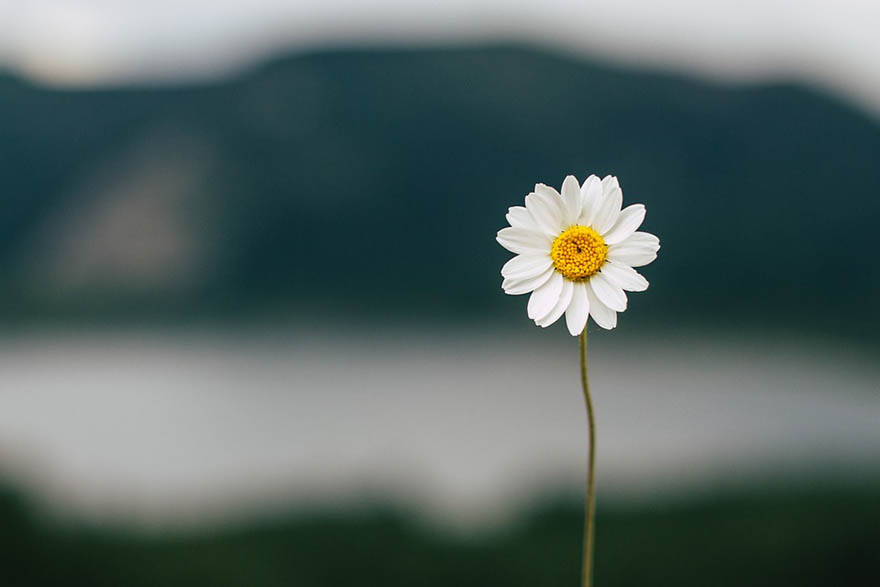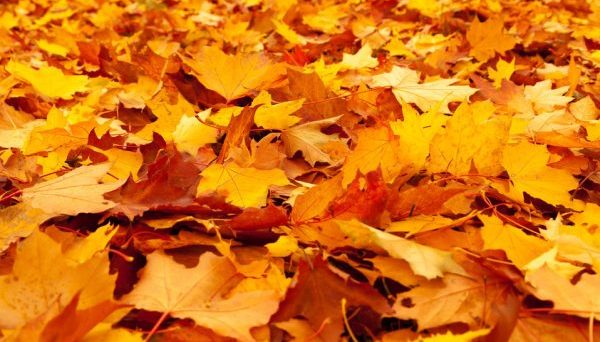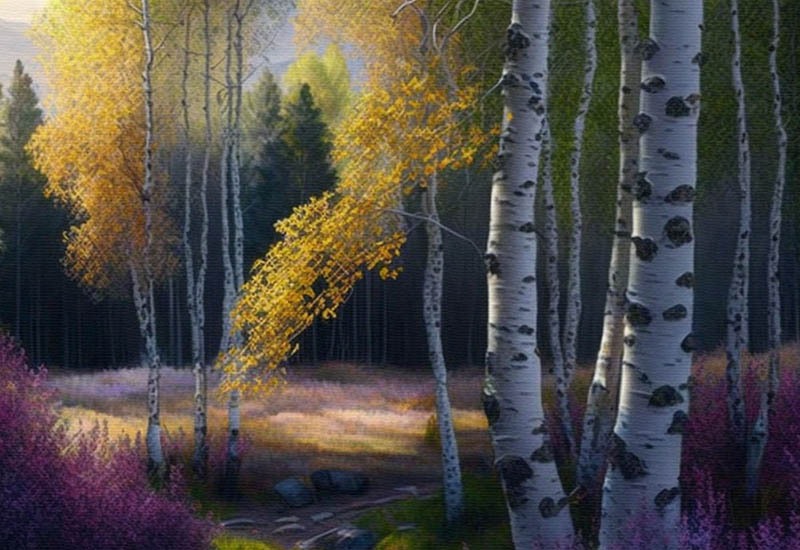- There are about 20 types of daisies. Some of them are very different from each other. However, they have one important similarity – a strong smell. Another name of the daisy flower is chamomile.
- All of them bloom in the first year of life. The flowers of all daisies look quite similar.
- The most common chamomile on earth is Matricaria chamomilla. Surely you’ve seen it, it’s a flower with white petals. It grows all over the world, with the exception of the Arctic and tropical regions, because the climate there is unsuitable for it.
- Matricaria chamomilla is one of the most widely used medicinal plants in the world. Botanists and doctors have written more scientific papers about it than about any other plant.
- Daisy seeds can be stored for a long time in dried form, and they won’t lose their ability to germinate. According to scientific research, chamomile seeds germinate with a 50% chance after 8 years of storage.
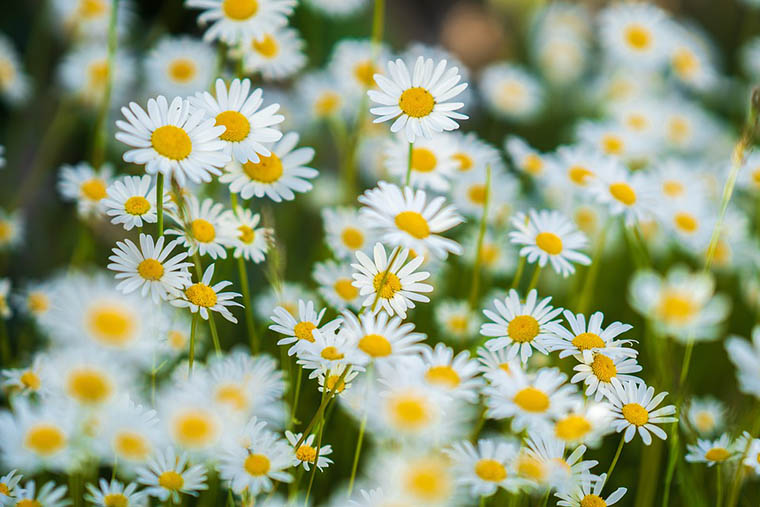
- People know about the healing properties of chamomile for thousands of years. A Roman author Pliny the Elder was the first to describe them in 77 B. C. Nearly 2 thousand years ago!
- Daisies are in bloom most of the year and can adapt to almost any environment. They can even live high in the mountains.
- This plant can be propagated only by seeds. The number of seeds in one flower can reach up to 5000. Up to 88 pounds (40 kg) of seeds can be harvested from one acre. One pound of chamomile seeds consists of approximately 7 million seeds.
- Chamomile oil sticks very strongly to the glass, so it is usually stored in metal bottles and bubbles. It has a blue color, so it is also used for coloring porcelain dishes and other products.
- If cows and goats eat daisies during grazing, then their milk will acquire an unpleasant taste and smell, since this plant smells very strongly. Fortunately, these animals avoid eating it, as they just don’t like it.
- People use daisies in the food industry. Its dried crushed leaves are a spice, and the essential oil serves as a flavoring for liqueurs and some other beverages.
- There’s a special collection of medicinal herbs, which minimizes the negative effects of radiation exposure received by a person. One of the essential ingredients of this collection is daisy Matricaria chamomilla.
- People grow chamomile all over the world because of its medicinal properties. However, it’s just a weed, and it often grows everywhere: along roadsides, in gardens, and literally everywhere where conditions are suitable more or less.
- Hippocrates recommended the use of decoctions from it as an anticonvulsant and analgesic. And he didn’t know about all its useful properties yet!
- Matricaria discoidea is also widely used in medicine. This plant is spread all over the world, but different peoples have their own ways of using it.
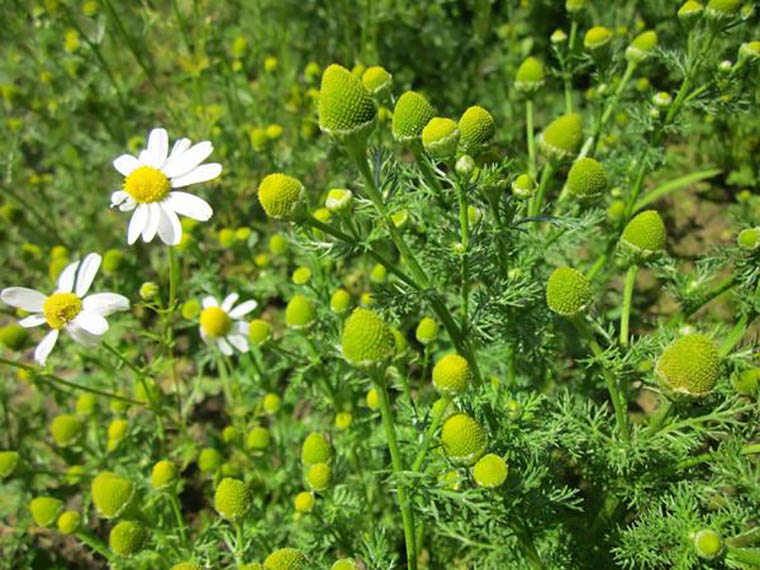
- Preparations based on chamomile pharmacy are widely used to treat a variety of ailments, mainly related to the human digestive system. Also, an extract from this plant is often included in various creams and shampoos, as it has a beneficial effect on the condition of hair and skin.
- Daisies are a part of the sunflower family and grow in very similar habitats as their big yellow relatives.
- In some countries, fresh young chamomile leaves are eaten. People slice them and add them to salads, as they taste like artichokes. In addition, they are very rich in vitamin C.
- Though daisies originated in Europe and Asia, they were introduced to America and Australia. They are now found on every continent except Antarctica. These plants can thrive in both wet and dry climates.
- The name “daisy” originated from the Old English phrase “Daes eage”. It mean’s “Day’s eye”. This name reflects how daisies open their petals in the morning and close them in the evening.
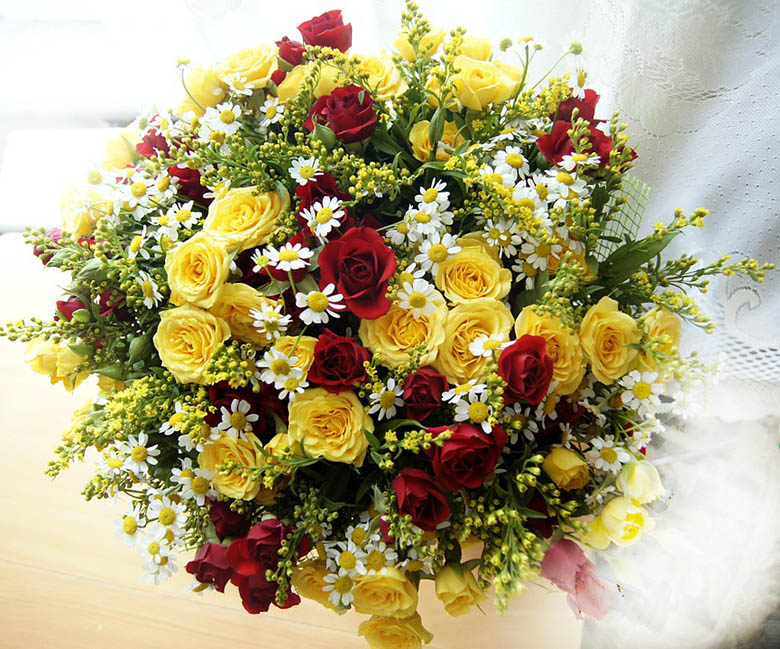
- Bees love daisies because there’s enough room for them to land in the center of the flower to collect pollen and nectar. Pollinators can collect lots of food from one daisy.
- Daisies may be small blooms, but they make up for their diminutive size in group volume. They make up almost 10% of all flowering plants on the planet.
- Soft white petals are the most iconic daisy look, but they come in lots of other colors: red, yellow, orange, purple, rose, and crimson.
- A daisy is actually two flowers in one. The white petals count as one flower and the yellow disk petals form the part of the flower which looks like a yellow eye. These yellow disk petals are technically another flower.
- Daisies are currently the fifth most popular flower in the world and have wowed culture after culture throughout the centuries.
